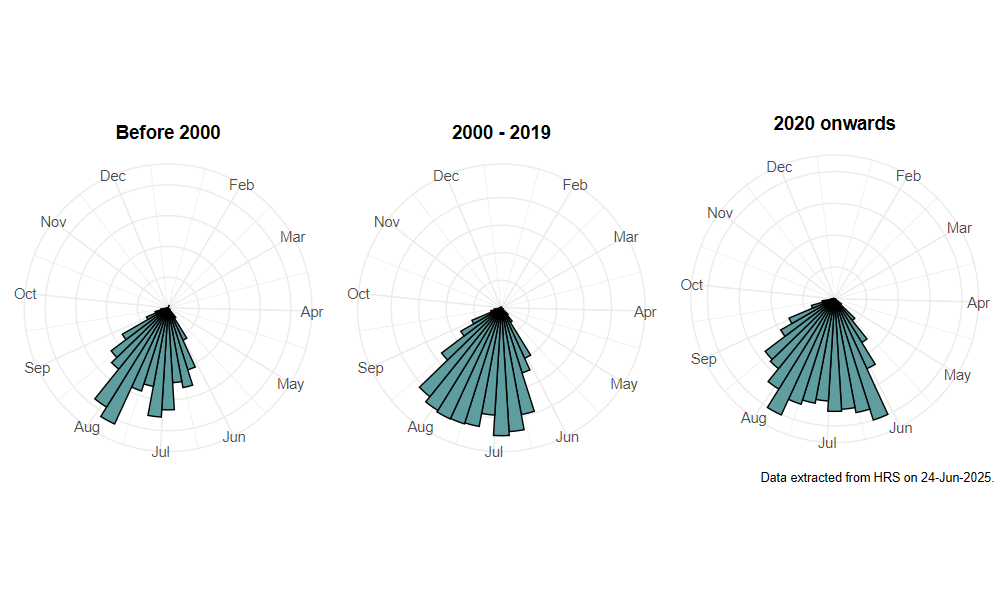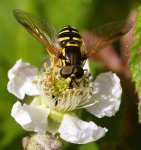Chrysotoxum festivum (Linnaeus, 1758)
Identification
Identification difficulty = 2. ![]()
![]() according to Ball & Morris, 20241
according to Ball & Morris, 20241
Biology
The larva and puparium of this species have been described by Speight (1976)2 who found a mature larva with the black ant Lasius niger under a stone in a scrubby pasture. Adults are fast-flying and visit a wide range of flowers. They are normally found in grassy places near the shelter of woodland edge, scrub or hedgerows. Males hover at 2-4m.
Flight period
The following plots show the number of unique records per week excluding those reported to be of immature stages.

Distribution
This is primarily a southern species, occurring most frequently south of a line between Morecambe Bay and the Humber, although there are several noteworthy records from northern Scotland. This is mainly a coastal species in Scotland. There is some evidence of a northward expansion of range since 2000.

Trends
The following plots show the Frescalo TFactor vs year and a map of the rescaled frequency (all records) for the species.
